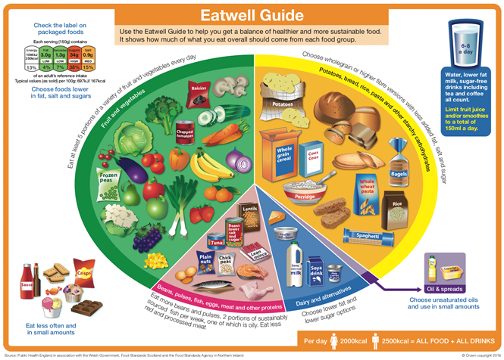How are we meeting the challenge of providing a balanced, nutritious breakfast to children as fuel for learning and good health?
By Annah Herbert-Graham, Magic Breakfast’s Nutrition Advisor
Magic Breakfast strives to provide healthy, nutritious breakfasts to children to support their learning and wellbeing throughout the morning, with our ultimate aim being #NoChildTooHungryToLearn.
We have always supplied core breakfast products which meet School Food Standards1 across the UK and continue to review our breakfast provision as new evidence and guidance emerges in relation to nutrition and health. This means we continually assess and update the range of breakfast products that we offer, with emphasis on providing variety and balance, increasing fibre intake and reducing sugar consumption: all important nutritional considerations that are linked to better health outcomes for young people.
Balance and Variety
A balanced breakfast will contain foods from all major food groups, including proteins, carbohydrates, and fats (focusing on unsaturated fats). Within this balance we also need to include vitamins and minerals, which we get from fruit, vegetables, dairy products, animal and plant-based proteins. The NHS Eatwell guide gives a clear visual idea of which foods fit into each group.

We can see that an overall healthy diet should consist of approximately:
1/3 Fruit and Veg : fresh, frozen or canned = essential vitamins, minerals and fibre.
1/3 Starchy Carbohydrates: opt for wholegrains = increased fibre for sustained energy.
1/3 Protein / Fats: from dairy, meat, fish, eggs, beans and other plant-based sources. Fats are essential in the diet in small quantities. Aim to include unsaturated fats such as oily fish, olive oil, flaxseeds, walnuts and sunflower seeds.
Alongside food, it is important to offer water with each meal to ensure the body is adequately hydrated. Drinking milk is also a nutritious way to stay hydrated, as it is a natural source of calcium, phosphorus, iodine and B vitamins, which are essential for growing bodies and minds.
When considering how to ensure good breakfast nutrition, the key is to offer a variety and balance of foods and nutrients over time. We can use the Eatwell guide to build the best combinations of common breakfast items, ensuring a balanced meal. This method of approaching breakfast will inform the range of items we provide and how we guide schools in supplementing the offer to include all food groups.
Possible breakfast combinations, which can be mixed and matched as long as a range of foods and food groups are offered, include:
Oat Porridge made with milk (or fortified dairy-free alternative) + mixed berries + flaxseeds topping
Weetabix + milk + chopped banana + glass of water
Wholemeal toast + baked beans + pear + glass of milk
‘Half and Half’ toast (with unsaturated spread e.g. olive oil) + eggs + satsuma + glass of milk
Seeded Bread + hummus as spread + chopped cucumber / carrot / pepper + glass of milk
Bagel + low-fat cream cheese spread + chopped tomato & chives + glass of water
Plain natural yoghurt + handful
of oats / wholegrain
cereal + chopped apple +
pumpkin seeds + glass of water
Focus on Fibre
Fibre is an essential part of a healthy diet which supports digestive health, sustains energy levels and balances blood sugar levels. However, it is known that many of us do not consume the recommended amount of daily fibre for our age – currently 20g a day for primary aged children, 25g a day for secondary aged children and 30g a day for adults.
The updated Nutritional Requirements for Food and Drink in Schools (Scotland)2 introduced a minimum standard for fibre, stating that all bread and cereals provided in schools must contain at least 3g of fibre per 100g. Any product containing 6g of fibre or more is considered ‘high fibre’. In terms of nutrition, this is a welcome move as we should take every opportunity to increase children’s fibre intake, and wholegrain breakfast cereals are excellent sources of fibre.
Benefits of Breakfast
As well as the breakfast cereals we provide, we encourage schools to offer fruit and vegetables alongside bread and cereals to further increase the nutritional value of breakfast for children. If we view breakfast as an opportunity to provide up to 30% of children’s daily nutritional needs (one out of three main meals), it highlights the importance of choosing nutritionally dense foods that support health and wellbeing as well as keeping children full and fuelled throughout the morning.
It is essential that Magic Breakfast, as a food provider, works with our partners and the whole school community to support young people in making healthier food choices. Providing consistent messaging in line with wider public health advice advocates our commitment to tackling child food insecurity now while considering the long-term positive health outcomes that are linked to good nutrition during childhood.
- DfE School food standards: resources for schools https://www.gov.uk/government/publications/school-food-standards-resources-for-schools
- Scottish Government. Healthy eating in schools: guidance 2020. February 2021, https://www.gov.scot/publications/healthy-eating-schools-guidance-2020/pages/13/






